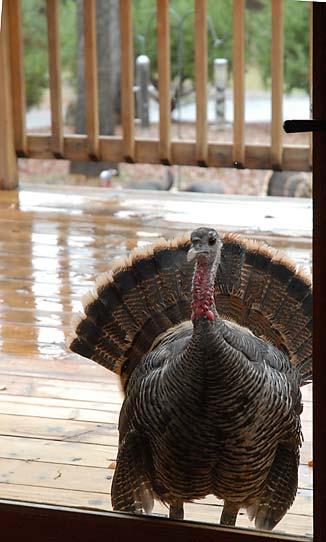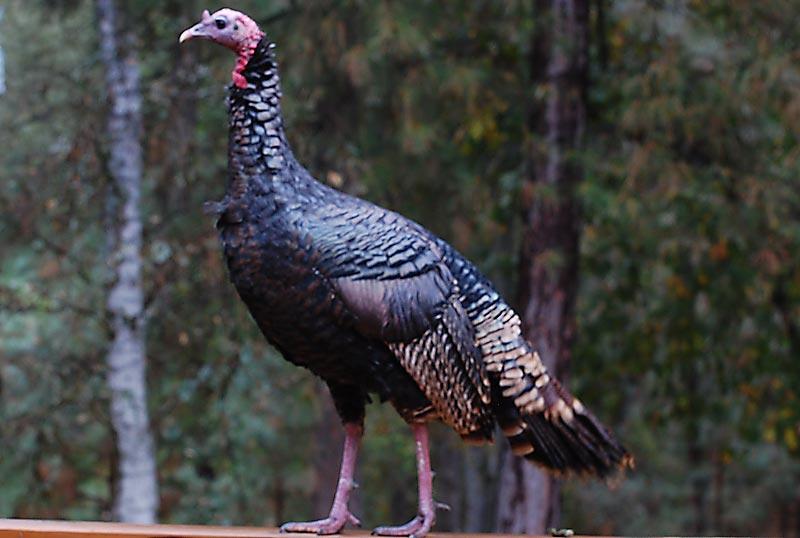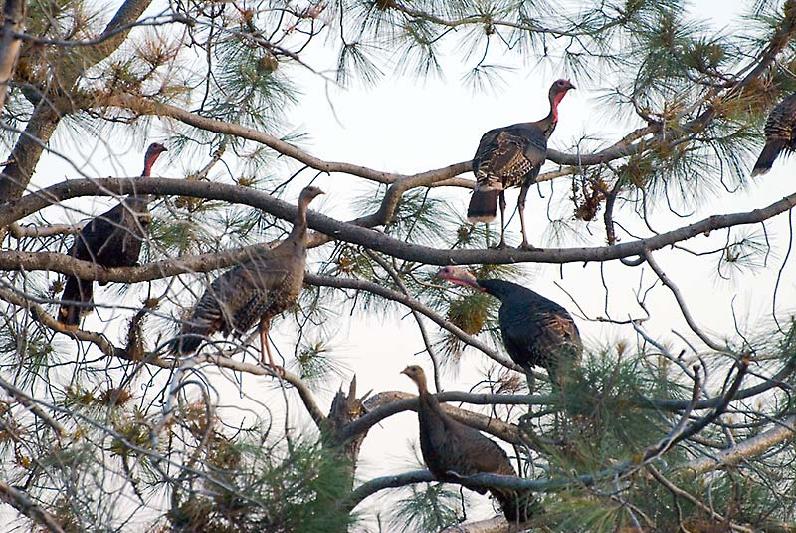CALIFORNIA – With shorter days and a chilly nip in the air, we know fall has arrived and winter is not too far off.
As the season changes, so do the habits of wildlife. Bears stock up on calories for winter hibernation, birds migrate to warmer climates and wild turkeys seem to come out in droves.While these wild game birds may seem harmless and approachable, they can cause problems. Many homeowners can’t resist feeding them. What starts out as innocent fun can become a nuisance if the birds start destroying flower and vegetable gardens, leaving their droppings on patios and decks or roosting on cars where they may scratch the paint.
This time of year, Department of Fish and Game (DFG) typically sees an increase in complaints about nuisance wild turkeys. DFG recommends the following:

– If turkeys are causing problems in your yard, remove all sources of food such as bird feeders and/or pet food, and consider motion-detecting sprinklers to discourage visits.
– Know that wild turkeys typically will not enter yards with dogs.
– If confronted by a wild turkey behaving aggressively, slowly back away. Turkeys often strut and gobble at people, but very rarely actually come into contact with them.
– If you find an injured turkey, report it to your nearest DFG regional office.
– Depredation permits can be issued if wild turkeys are causing excessive property damage. For more information on wild turkeys, visit: www.dfg.ca.gov/keepmewild/turkey.html.
Weighing up to 20 pounds, the wild turkey is native to North America. These majestic birds were once a primary food source for Native Americans and early settlers. In the early 1900’s, deforestation and market hunting brought turkeys to the brink of extinction. But through better wildlife management and improved forestry practices, the wild turkey is a true success story, with an estimated population of 7 million in the wild today.

Earlier this year, the Fish and Game Commission (FGC) expanded wild turkey hunting from 16 to 30 days, marking the fall season from Nov. 10 – Dec. 9, 2012. In addition, the FGC also increased the season limit from one to two turkeys. Hunters may take one turkey (either-sex) per day and two per person. More information on additional hunt dates can be found here: www.dfg.ca.gov/regulations/upland-summary-12-13.html.




